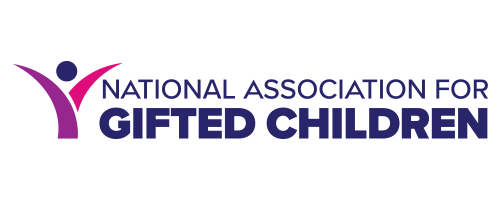NAGC Public Policy Update - Week of May 5
By Kuna Tavalin, Public Policy Advisor, Stride Policy Solutions
House ED Committee Blocks Move to Divulge ED Reorganization Plans
On April 9, the House Education and Workforce Committee voted along party lines to adversely report H. Res. 237, a resolution to require the Administration to provide documentation of their plans to reorganize the U.S. Department of Education (ED). The resolution instructs ED and the White House to provide all documents regarding closures, staffing reductions, and activities tied to downsizing. It also seeks information detailing how the Administration plans to fulfill its obligations under the Elementary and Secondary Education Act (ESSA), the Individuals with Disabilities Education Act (IDEA), Section 504 of the Rehabilitation Act of 1973, and other relevant statutes if ED were to close. While technically not a “no” vote, an adverse report sends the resolution to the House floor with a recommendation that it should not pass.
Read the resolution here.
Court Pauses ED’s DEI Directive Requiring State Certification of Compliance
On April 10, a U.S. District Court required the U.S. Department of Education (ED) to temporarily halt any action related to a directive issued on April 3 requiring States to sign an assurance to certify that their [K-12] schools adhere to requirements of Title VI of the Civil Rights Act and that “diversity, equity, and inclusion” (DEI) efforts do not exist within their [K-12 district/school] curriculums in order to receive federal funding under Title I of the Elementary and Secondary Education Act (ESEA). The court’s emergency agreement pauses the new directive and provides immediate relief to schools across the country while the broader legal challenge in ACLU, NEA et. al v. U.S. Department of Education continues. Given Secretary of Education Linda McMahon’s public statements -that states will continue to receive their Title I and other federal funding despite other cuts occurring at ED- the directive caught state education commissioners off guard. Within 24 hours of receipt, several states (e.g., WA, NY, MN) responded with formal letters to Secretary McMahon articulating that they have [already] satisfied federal requirements under Title VI to receive Title I funds. While the endgame with this particular directive is unclear, it does follow a pattern within the Administration which started with an executive order (EO) issued January 21 titled Ending Illegal Discrimination and Restoring Merit-Based Opportunity, followed by the February 14 “DEI” Dear Colleague Letter, and also the launch of EndDEI, a web portal where citizens can file complaints against schools for participating in discriminatory practices. Meanwhile, McMahon has closed half of OCR’s regional offices and fired more than half of the attorneys whose jobs were to investigate claims of discrimination.
To read about the lawsuit and this week’s pause on state certification go here.
To read ED’s assurance of certification requirements issued to States go here.
Trump Administration Issues Multiple EOs Impacting Education
On April 23, President Trump signed a series of executive orders (EOs) that impact education. Below is a summary of key orders:
Reinstating Commonsense, Non-Discriminatory School Discipline Policies aims to eliminate diversity, equity, and inclusion (DEI) considerations from school discipline policies and rescinds federal guidance issued in 2023 by the Biden Administration. The order requires the Secretary of Education, in partnership with other agencies, to develop new federal guidance to state and local educational agencies. It authorizes action against institutions that engage in racially related disciplinary practices. To ensure compliance, districts must also submit a comprehensive report to the President that analyzes the effects of DEI-influenced discipline policies, assessing the use of federal funds in support of such practices—including those administered through nonprofits— and demonstrating “that federal funds do not support racially preferential policies, including through nonprofit organizations, and proposing model discipline policies rooted in American values.”
Restoring Equality of Opportunity and Meritocracy declares it is US policy “to eliminate the use of disparate-impact liability in all contexts to the maximum degree possible.” It starts the rollback of some regulations including Department of Justice Title VI regulations (signed into law in 1966) which prohibit discrimination based on race, color, or national origin in employment practices of recipients of federal financial assistance and deprioritizes the enforcement of others. Within 45 days, the Attorney General and Chair of the Equality Equal Employment Opportunity Commission must assess all pending investigations, civil suits, or positions taken in ongoing matters under every Federal civil rights law within their jurisdictions, including Title VII of the Civil Rights Act of 1964, that “rely on a theory of disparate-impact liability, and …shall take appropriate action.” Within 45 days all other federal agencies are required to evaluate existing consent judgments and permanent injunctions that “rely on theories of disparate-impact liability and take appropriate action.”
Advancing Artificial Intelligence Education for American Youth directs the creation of “new education and workforce development opportunities for America’s youth, fostering interest and expertise in artificial intelligence (AI) technology from an early age to maintain America’s global dominance in this technological revolution for future generations.” The EO will establish the White House Task Force on AI, chaired by the Director of the Office of Science and Technology Policy and include Administration officials. The task force will oversee a new Presidential AI Challenge to recognize student and educator achievements, expand AI adoption nationwide, and promote collaboration across sectors to solve national issues using AI. It will also create public-private partnerships to support K-12 AI education and integrate AI tools in classrooms. Additionally, the Secretary of Education is directed to prioritize the use of AI in discretionary grants for teacher training and the Director of the National Science Foundation to prioritize research on the use of AI in education.
Preparing Americans for High-Paying Skilled Trade Jobs of the Future directs the Secretaries of Labor, Education, and Commerce to review and modernize federal workforce programs to meet the needs of emerging industries. They must deliver a streamlined plan to the President that re-aligns these programs to support reshoring, re-industrialization, and the AI revolution, aiming to strengthen America's global economic leadership. The EO has an emphasis on expanding the number of people who participate in apprenticeship programs, aiming to reach and surpass one million Registered Apprenticeships.
Judge Curtails Trump Ban on DEI
Judge Landya McCafferty, a federal judge from New Hampshire, has ruled that the Administration has not provided an adequate definition of diversity, equity, and inclusion (DEI); that its policies threaten to limit free speech in the classroom; and that withholding of funds could cripple the operations of many districts, and oversteps the Administration’s authority over schools and districts. The court suit was prompted by an earlier Executive Order (EO) requiring states to attest they do not use DEI practices that violate the Administration’s interpretation of civil rights laws. In her ruling, McCafferty chose not to implement a nationwide halt to the policy. Instead, she restricted the scope to schools that either employ or have contracts with at least one member from the organizations involved in the lawsuit: the National Education Association (NEA), the largest teachers' union in the U.S., and the Center for Black Educator Development, a nonprofit focused on recruiting and training Black teachers. Because the NEA represents over three million members, most school districts in the nation are likely to be affected.
White House Sends 2026 “Skinny” Budget to Congress
In alignment with the new Administration’s agenda to streamline federal programs and cut federal spending, the White House released the Fiscal Year (FY) 2026 Budget Request on May 2 to inform Congress’s work on annual appropriations. The ‘Skinny Budget’, as described by the White House and the press, includes a 46-page outline of proposed increases, reductions, and consolidations to programs in each federal agency. Prepared by the Office of Management and Budget (OMB), the FY 2026 Budget provides proposed funding levels for top line education, justice, health and other federal programs but does not provide budget details for each program. For example, under the U.S. Department of Education (ED), OMB proposes to “preserve Title I and streamline K-12 programs” in a “K-12 Simplified Funding Program” which in total is cut by $4.5 billion from FY 2025 and would consolidate 18 competitive and formula grant programs into a new formula grant. Similarly, the “Special Education Simplified Funding Program” remains level funded and would “consolidate” seven Individuals with Disabilities Education Act (IDEA) programs into one. The Charter School Program would be increased by $60 million and ED’s Office for Civil Rights would be cut by $49 million. With an overall cut to the education budget of 15.3 percent, other big losers are Adult Education ($729 million cut), the elimination of TRIO and GearUP -which serve as access and exposure programs to college for low-income children and children with disabilities as well as the elimination of the Teacher Quality Partnership (TQP) grants for new teachers. Notably, career and technical education programs, which have been touted as a priority by the Administration, are not explicitly included in the document.
Regarding the Department of Health and Human Services (HHS) the President is proposing a 26.2 percent cut overall with a plan to re-allocate more than $513 million to support the Make America Healthy Again program. Specific cuts include the elimination of the preschool development grant ($315 million) big cuts to the National Institutes of Health ($17.9 billion) and the Substance Abuse and Mental Health Services Administration ($1.6 billion) and more. Head Start, which was rumored to be eliminated in leaked drafts in recent weeks, was not mentioned in the document. Finally, at the Department of Justice (DOJ), OMB has detailed a $1.1 billion reduction that would eliminate 40 DOJ grant programs that support state and local entities, proposes to “realign [the] Violence Against Women Act funding with its original core mission” and proposes a $193 million cut to the Civil Rights Division (which includes disability rights). In terms of process, the budget formally puts the priorities of the sitting President in play as House and Senate appropriators negotiate spending bills over the coming weeks and months.
The Jacob K. Javits Gifted and Talented Students Education Program, the only federal funding program targeted to support gifted and talented education, was not specifically mentioned in the document.
To view the skinny budget, go here.


